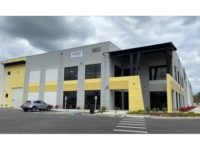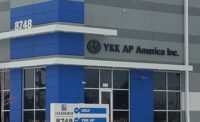NCFI Polyurethanes, the U.S. company that pioneered the scientific development and use of spray polyurethane foam (SPF) for roofing and insulation in the 1960s, and polyurethane foam for geotechnical applications in the 1980s, has opened a new manufacturing facility in Houston.
According to NCFI president, Chip Holton, even with more than 600,000 square feet of manufacturing space in the US, and 14 distribution warehouses, one of country’s last remaining independent system houses hasn’t had time to enjoy their success.
“We’ve been experiencing a surge in demand,” says Holton. ““Texas is the center of the petroleum and chemical industry in the US, so being closer to our raw materials suppliers helps us shorten our supply chain.” He continues, “Our leadership is looking at North American polyurethane foam CAGR between 5.68-6.5 percent by 2024 with building, construction, and geotechnical the largest segments. SPF now accounts for 40 percent of the insulation market, and that will continue rising, so it is vital our production volume is fine-tuned to meet the demand.”
According to Holton, NCFI’s Construction Foam Division, which produces SPF roofing and coatings under the Enduratech brand, residential SPF insulation under the InsulStar, InsulStar 1.7, and InsulStar Light brands, and commercial SPF insulation under the InsulStar and InsulBloc brands has experienced consistent growth over the past five years, while their geotechnical division’s Terrathane brand is also experiencing steady growth. “Our plan for sustainable growth went into effect about five years ago. As an independent company we knew we’d have to be nimble enough to shift our product lines and switch capacity from one plant to another as we grew. With the new Texas footprint, we’re closer to raw materials, and we’re in the middle of one of the strongest building markets in the US—Texas and the Southwest. We have direct access to almost all of the US population.”
Holton says they designed the plant to be the “most advanced manufacturing facility in the industry as far as automation goes.” He says, “That plant plays as big role in maintaining what we see are four key elements to our competitive advantage in the US building market: continuing to produce the highest quality products for which we’re known, taking remarkable care of our contractors, while providing training and technical support based on our 55-plus years of building and spraying experience, scientific product innovation ahead of the industry curve, making our manufacturing facilities the safest for our associates and most efficient for our customers. We’ve done that with the Houston plant.”
With an opening date scheduled for January 1, 2021, Holton says the pandemic made sticking to the plan a daily challenge. “Trying to move equipment across the country, hire and train new production associates, get an advanced manufacturing facility built and new equipment installed and up-and-running, and getting the needed test runs underway to meet our Q&A standards made for an anxious 4Q20. We were literally opening Christmas gifts then doing Zoom calls for updates on the plant. And we made it, the plant opened the first week of January and we’re producing and shipping material now.”
While R&D will remain in NC, the new Houston facility will house the company’s main audio-visual-interactive training center with the latest learning tools. “That is one of our main goals for 2021, contactor education and training. We’ll do more and do it better, so NCFI contractors become the gold standard for applicators in the US.”
According to Holton, now that the Texas plant is online it frees up space and capacity at the main plant in NC for production for their custom formulated products. “The shift will help us balance production within our divisions. Our OEM work with custom integral skins, elastomers, and fire-rated panels will expand to fill the remaining space.” He says, “Our plan is to expand capacity at all plants, and perhaps open new facilities, as we grow toward the next 55 years. Texas is the first big step forward.”



